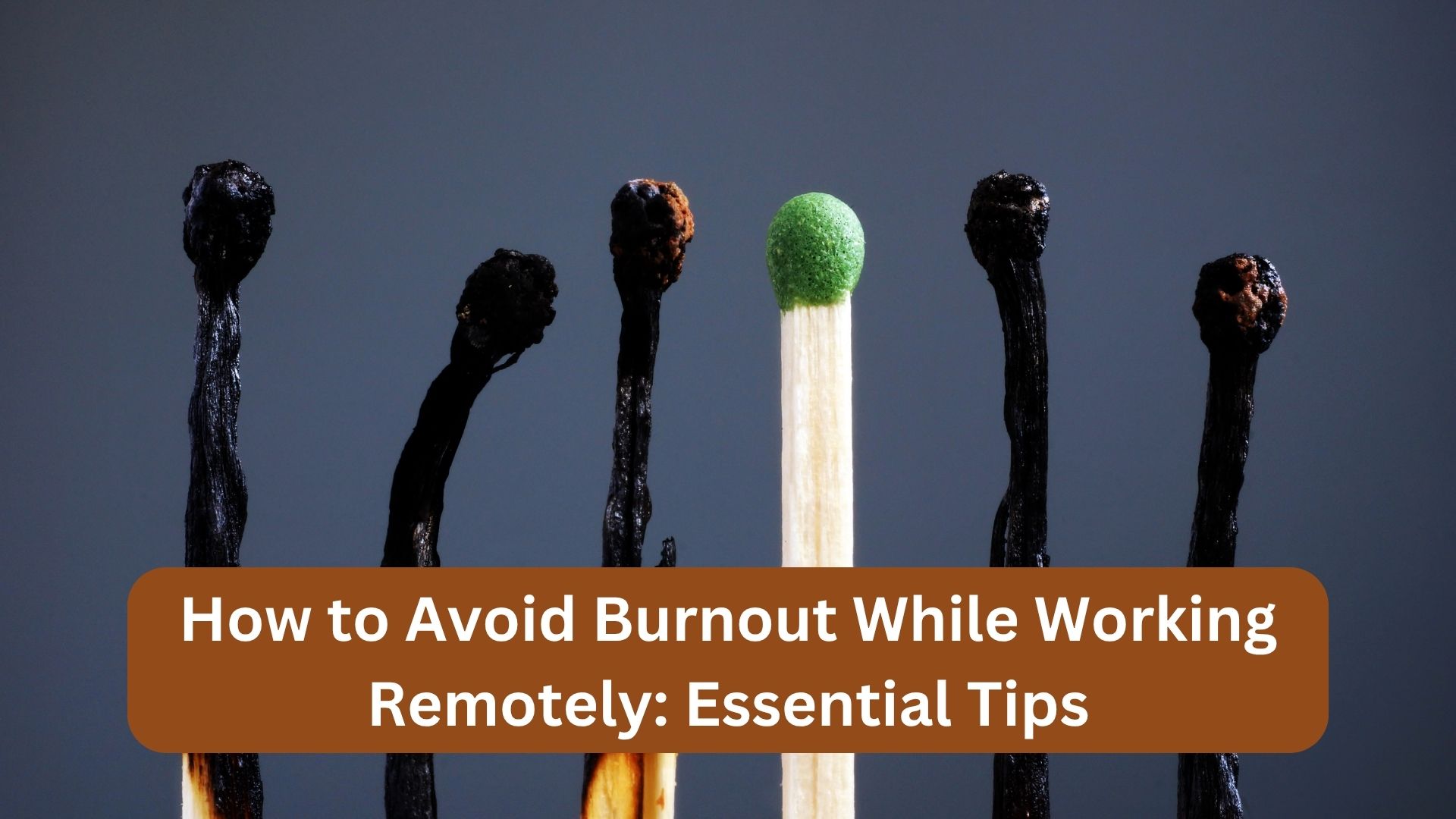Working remotely offers flexibility, freedom, and the comfort of home, but it also comes with unique challenges—one of the biggest being burnout. Without physical separation between work and life, many virtual workers find themselves glued to their screens longer than they intended, leading to exhaustion, stress, and a drop in productivity. In this guide, we’ll explore practical tips, strategies, and tools to help you maintain balance and prevent burnout while thriving in your remote work setup.
Understanding Burnout in the Remote Work Era
Burnout is more than just feeling tired. According to the World Health Organization, it’s a syndrome caused by chronic workplace stress that hasn’t been successfully managed. In remote work settings, this often looks like:
- Constantly working overtime
- Feeling isolated or disconnected
- Lack of motivation and creativity
- Physical symptoms like headaches, fatigue, and insomnia
- Emotional exhaustion and irritability
1. Establish Clear Boundaries
Creating physical and time-based boundaries is crucial to preventing burnout.
| Tip | How to Apply |
|---|---|
| Set Work Hours | Use time-blocking and stick to a defined start and end time. |
| Create a Work Zone | Dedicate a specific space in your home for work. |
| Turn Off Notifications | Outside work hours, disable email, Slack, and other work alerts. |
Pro Tip: Use tools like Google Calendar to signal your “off hours” visually for both you and your team.
2. Take Regular Breaks
Don’t underestimate the power of a good break. The human brain needs downtime to function optimally.
| Break Type | Benefits |
| Pomodoro (25/5) | Increases focus and stamina in short bursts |
| Lunch Breaks | Helps with digestion, mental reset |
| Movement Breaks | Boosts circulation, reduces tension and eye strain |
Use apps like Stretchly or Focus Booster to remind you when to pause.
3. Prioritize Communication
Feeling disconnected can intensify burnout. Regular, intentional communication fosters connection.
- Check in with teammates daily—even just a quick “hello” on Slack
- Schedule virtual coffee chats or end-of-week celebrations
- Encourage camera-on meetings occasionally to boost engagement
Tools like Slack, Zoom, and Donut (for social chats) help facilitate this.
4. Learn to Say No
Remote workers often feel they have to be always available. But overcommitting is a direct path to burnout.
- Turn off the need to immediately respond to every ping
- Learn to prioritize tasks based on deadlines and impact
- Use polite decline scripts like: “I’m currently focused on a high-priority project, but happy to revisit this next week.”
Apps like ClickUp or Trello help you track capacity and share timelines transparently.
5. Schedule Downtime Intentionally
Plan your recharge the same way you plan your work. Without guilt.
| Activity | Description |
| Nature Walks | Boosts mood and lowers cortisol levels |
| Hobbies | Keeps your brain creatively stimulated |
| Digital Detox | Set aside a weekend day for zero screens |
Idea: Use Google Calendar or Notion to schedule personal time blocks.
6. Optimize Your Workspace
Your physical setup affects your mental health. A cluttered or uncomfortable space contributes to stress.
| Fix | Why It Helps |
| Ergonomic Chair | Reduces back and neck pain |
| Good Lighting | Prevents eye strain and regulates circadian rhythm |
| Plants & Decor | Adds calm and positive energy |
Bonus: Use noise-canceling headphones to minimize distractions.
7. Practice Mindfulness and Mental Hygiene
Incorporate daily practices that keep your stress levels in check.
- Breathing exercises (e.g., box breathing, 4-7-8 method)
- Meditation apps like Calm, Headspace, or Insight Timer
- Journaling to process thoughts and emotions
Try starting or ending your day with 5 minutes of gratitude writing or quiet reflection.
8. Seek Professional Help When Needed
If you feel overwhelmed for prolonged periods, don’t hesitate to speak with a mental health professional. Many remote companies now offer teletherapy or mental wellness stipends.
Also consider peer support groups and forums for virtual workers (e.g., Reddit’s r/telecommuting, Facebook groups for freelancers).
9. Use Tools That Help You Work Smarter
Don’t rely solely on willpower. Let tech do some heavy lifting.
| Tool | Benefit |
| RescueTime | Tracks where your time goes and gives focus suggestions |
| Notion | Combines task lists, journals, and dashboards in one place |
| Clockwise | Optimizes your calendar for deep work and focus time |
Automation Tip: Automate recurring tasks using Zapier or Make.com to reduce manual stress.
10. Reconnect With Your Why
Sometimes burnout comes from forgetting the purpose behind your work. Revisit your goals regularly.
- Why did you choose to work remotely?
- What kind of life are you building?
- Who are you helping through your work?
Keep a vision board, journal, or mission statement visible in your workspace.
Final Thoughts
Burnout doesn’t mean you’re weak—it means your system needs recalibration. With intentional strategies, supportive tools, and a healthy mindset, you can enjoy the perks of remote work without paying the price in your mental and physical well-being.
Take one small step today: schedule a break, mute notifications after hours, or set up that comfy home office chair you’ve been putting off. Your future self will thank you.







Leave a Reply